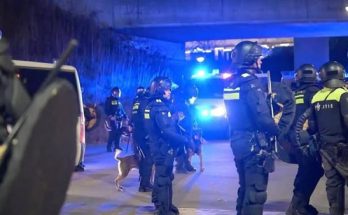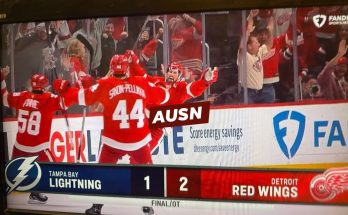Jaland Lowe’s emergence as a dominant collegiate point guard has been nothing short of remarkable. Born on September 6, 2004, Lowe starred at Fort Bend Marshall High School in Missouri City, Texas, where he averaged 26.4 points, 8.1 rebounds, 4.3 assists, 3.1 steals and 2.3 blocks per outing during his senior season. That performance earned him first-team All-Peach Jam honors and a spot at the Jordan Brand Classic. His school was a state powerhouse, and his poise, court vision and leadership quickly stood out. Rated a four-star recruit, Lowe’s family ties—his father Marland’s deep roots in Houston-area basketball and his godfather being former NBA coach and player John Lucas II—only underscored the basketball pedigree that shaped him .
Lowe committed to the University of Pittsburgh in 2022, where he immediately turned heads. His freshman year saw him thrust into starting duty midway through the season, and he responded by averaging 9.6 points, 3.3 assists and 2.8 rebounds across 33 games. His shooting hovered around 40.3% from three-point range, showing early flashes of shooting proficiency. It was a solid foundation, but his sophomore year elevated him into full breakout territory. In 2024–25, he started all 31 games, leading the Panthers with 16.8 points per game, while also dishing out 5.5 assists, pulling down 4.2 rebounds and averaging 1.8 steals per contest. He became only the sixth player in Pitt history to record a triple-double—11 points, 10 rebounds and 10 assists against VMI —and scored 20+ points ten times, including a career-high 28 in an overtime win at Ohio State. His stat lines earned him third-team All‑ACC honors and the NABC Mid‑Atlantic Second‑Team All‑District nod .
That remarkable season, though, came with a caveat: efficiency at the rim and from long range wasn’t always ideal. He shot 37.6% from the field and around 26.6% from three-point range, partly because he was forced to carry the offensive load at Pitt, taking high-volume, contested shot. Yet his 88.6% free‑throw percentage was an encouraging indicator of shooting skill.
Opposing coaches recognized his talent. Duke’s Jon Scheyer said, “Lowe’s a really good player … he can score in a variety of ways … he has great next‑play mentality”, while Louisville’s Pat Kelsey described him as “a dynamic guard” with elite quickness, a knack for mid‑range scoring and passing ability ([on3.com][4]). ACC coaches and rival analysts alike spoke of the “matrix” nature of his passing—how he could freeze defenders and deliver pinpoint assists . Reddit buzz echoed this sentiment: one commenter praised his “crisp handle” and “real touch around the rim,” noting his assist-to-turnover ratio and improving three-point numbers after securing a starting role .
Despite NBA Draft prospects lurking, Lowe decided to enter the portal and ultimately transferred to Kentucky under coach Mark Pope for the 2025–26 season. His choice wasn’t made alone—former Wildcats like De’Aaron Fox and Aaron Harrison shared their Kentucky experiences with Lowe and his father, emphasizing the unmatched fan base, culture and basketball IQ on campusThat helped tip the scales. After officially announcing his transfer, Lowe withdrew from the 2025 NBA Draft, declaring his decision on X (formerly Twitter) with the message “Big Blue Nation See you soon!” .
At Kentucky, Lowe enters a team reshaped by a mix of transfers, returners and recruits, and BBN (Big Blue Nation) is buzzing. Coach Pope has framed Lowe as an “explosive, playmaking, veteran point guard” with elite athleticism, handling and change-of-direction ability. Pope added he wants to “hyperspeed his game,” pushing him to operate at a faster tempo within a structured system . This is a dramatic shift from Pitt, where Lowe carried offensive pressure; at Kentucky he’ll have shooters around him, taking fewer ill-advised shots and allowing him to showcase his passing and playmaking more effectively.
Kentucky’s roster—anchored by Jasper Johnson, Denzel Aberdeen, Malachi Moreno, Jayden Quaintance, Otega Oweh and Trent Noah—offers Lowe plenty of scoring partners. Lowe described them as “the best backcourt in the country” and said the group’s talent, chemistry and hard work could take them all the way ([aseaofblue.com][9]). Teammate Trent Noah, a Kentucky native, said verbally, “He’s an ultra‑quick guard… a really good shooter,” and noted that his poor shooting percentage at Pitt was a function of volume and system—not his skill—believing he’ll thrive in Pope’s scheme. Indeed, Lowe himself echoed that sentiment, saying on BBN Tonight the team’s detailed work ethic and shared goal of bringing home banner No. 9 helped seal his commitment.
Included in that mindset is a culture of giving back—Kentucky is heavily involved in tornado relief efforts, building community cohesion, and Lowe has expressed pride in representing a program that extends beyond the court.
Lowe’s G League Elite Camp performance further raised eyebrows: he delivered 9 points, 5 assists, +15 plus-minus, and just one turnover in 18 minutes. Kevin Sweeney from Sports Illustrated praised his poise, paint penetration and ball decisions, noting he’d added muscle to his frame.
The biggest question that lingered: could he handle the offensive transition efficiently? Analysts like Salim Prajapati believe yes. Prajapati noted Kentucky averaged just over 25 threes per game last season—and needed someone to take volume attempts. Lowe’s 41 threes at Pitt indicate he’s the kind of player who will shoot when open looks come—elevating the team’s perimeter threat. His free throw accuracy suggests better three-point efficiency in the future . Yet outlets like Sports Illustrated also cautioned that his shooting inefficiencies would need to improve, noting his field goal and three-point percentages at Pitt were below elite marks—but the system at Kentucky could be the key .
Coach Pope, confident in his system and Lowe’s talents, reinforced that Lowe would benefit from fewer forced attempts, more open looks, and a faster tempo environment. “He’s a great kid who wants nothing more than to win,” Pope said. There’s optimism that Lowe’s leadership and athleticism will not only stabilize Kentucky’s backcourt, but become a catalyst for serious national championship contention.
That championship aspiration—Banner No. 9—is on everyone’s mind. Lowe has made no secret of his door-to-door ambition: “I wanted to win a championship … wear Kentucky across my chest …”. In recent interviews, he has repeatedly cited that point: it’s not just about transferring; it’s about contending, about building habits for championship success, about legacy. The updated practice facilities and “the Assignment” No. 9 banner hanging in the gym serve as nonstop reminders of that collective goal.
Meanwhile, his decision to withdraw from the NBA Draft in May garnered interest: projected to be a mid-to-late first-rounder, Lowe chose instead to return and try to refine his game. At a press conference, he shared: “The League isn’t going anywhere. But this moment might … I wasn’t done at Kentucky.” He described the NBA pre-draft process as pressure-filled and overwhelming, and said that conversations with Pope, family and his support system led him back to Lexington, where he felt unfinished business. Pope emphasized his transparency and affirmed that Lowe could become even better, both in efficiency and leadership.
Kentucky fans responded emotionally. X feeds lit up with #LoweLoyalty, murals went up in Lexington, bookstores sold out of his #15 jerseys, and local businesses offered Lowe-inspired discounts. The community embraced him as their next floor general, their emotional heartbeat heading into a hopeful season.
Critics remain—what if his three-point shooting doesn’t improve? What if defense at the SEC level exposes flaws? What if pressure at Kentucky overwhelms him? Many voices see his efficiency as the lynchpin of Kentucky’s ceiling: if he delivers, the Wildcats could be top-5, championship-level; if he falters, their depth might not be enough .
But the consensus is that Kentucky has the infrastructure, coaching, roster and culture to help Lowe thrive. He fits an up-tempo mold, surrounded by shooters, in a community-driven environment. His story—from star high school guard to ACC breakout, to draft hopeful, to recommitment to legacy at Kentucky—is one of evolution, dedication and belief.
As summer workouts continue, BBN watches. Each practice rep, facility drill, chemistry-building event, and tornado relief activity is a brick in their shared foundation. Lowe’s unmistakable energy—cited by coaches and reporters alike—sets a tone: he’s locked in. He sees the mission; he sees the process. His work ethic, his love for the game, his hunger to compete and to win—they’re all here at Kentucky, under the roof of Rupp Arena, and within the voices of Big Blue Nation.
Kentucky’s season begins with expectations sky high. Banners, history, legacy—they’re not just slogans. They’re commitments. And with Jaland Lowe at the helm—his eyes forward, his feet moving, his teammates beside him—the journey toward Banner No. 9 begins in earnest. BBN will be right there behind him, chant after chant, dribble after dribble, as he chases history.


